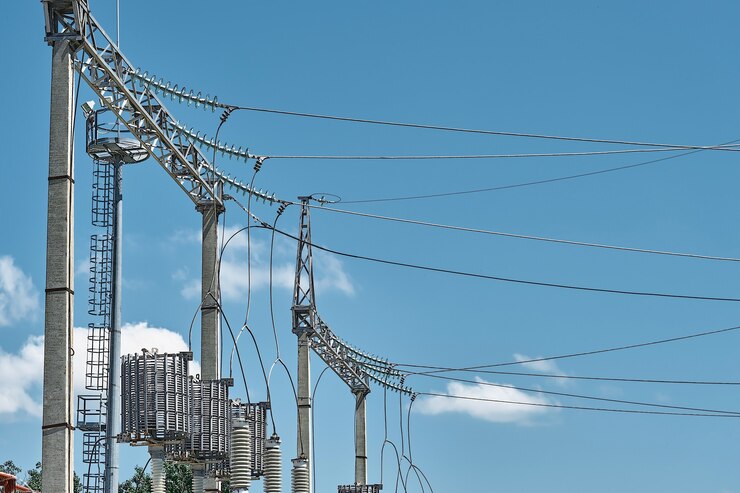Comparison of Overhead vs Underground Transmission Line
2025-02-07
Electrical supply can be distributed through two traditional methods, comprising overhead and underground transmission networks. The following article presents a thorough analysis and comparison of overhead vs underground transmission lines with an exploration of their environmental effects and safety aspects as well as reliability investigation, along with other essential factors. This informative guide provides significant knowledge about power transmission future to anyone working in transmission line design or urban planning, or general people who have interesting questions.
What are Overhead and Underground Transmission Lines?
A fundamental understanding must begin with the definitions of comparison of overhead vs underground transmission lines as the following section starts.
Overhead Power Lines: Traditional power lines extend across poles in open areas to create overhead transmission power lines. The power lines include conductors mounted on tower or pole structures that transmit electricity through power generation facilities to distribution centers and residential areas.
Underground Power Lines: They are placed beneath the surface for urban consumption and specific requirements of safety or aesthetic concerns. Protective conduits encase insulated high-voltage or low-voltage power cables.
Cost Comparison: Overhead vs Underground Transmission Lines
Total project expenses stand as the main element that determines the selection between underground and overhead transmission networks.
Overhead power lines require fewer expenses for installation because they cost less during the first stage. Overhead transmission lines need fewer materials than underground lines together with reduced labor requirements which do not include poles or towers. The installation expenses for underground lines become higher because of the costs associated with concealing cables along with trenching operations and sophisticated infrastructure needs.
The increased investment in developing underground transmission systems during installation leads to reduced maintenance expenses across its operational life. Weather-related conditions frequently damage overhead lines which leads to frequent maintenance operations.
The installation expenses of overhead transmission lines prove to be less expensive than the costs associated with underground transmission lines. The installation price of underground lines becomes advantageous when operating in populated areas with right-of-way and appearance challenges.

Which System Provides Better Dependability Between Reliability and Safety?
Reliability stands in favor of underground power lines in situations that prove difficult for power transmission.
Overhead Lines: Understandable weather conditions benefit overhead power lines but these systems become exposed to safety risks when faced with storms high winds and ice accumulation. Excessive weather conditions have the power to topple these lines and trigger power outages.
Underground lines: They persist as a safer option because they survive weather conditions effectively. Hazardous weather conditions pose no threat to underground power lines since trees cannot fall on them rendering these lines safer for regions susceptible to storms.
Safety Considerations: Underground power lines lower the possibility of electrocution and the safety dangers that come with damaged electrical wiring. The preference for underground power lines exists mainly because they become the standard distribution method for dense residential zones in urban locations.
Environmental Impact: A Green Perspective
The environmental consequences created by overhead transmission lines intersect dramatically with those made by underground transmission lines when building sustainable areas.
Overhead Lines: The visual effect of overhead lines creates substantial impairment to landscape appearances. Transmission lines established above ground disrupt wildlife habitats and affect animal pathways while spoiling scenic areas that emphasize beauty and appearance. The building procedure for overhead transmission lines demands extensive vegetation clearing to create construction space which produces detrimental impacts on local habitats.
Underground lines: The implementation of buried cables remains more costly but society generally views them as environmentally beneficial. These transmission lines protect the landscape from destruction while maintaining the environmental attractiveness of the natural landscape. Underground transmission lines decrease electromagnetic field (EMF) exposure affecting both people and animals because EMF exposure stands out as a developing health concern.
Aesthetics: The Visual Appeal of Transmission Lines
Urban dwellers often make their selection between overhead transmission lines and underground transmission lines based on visual appearance in these settings.
Overhead Lines: Transmission lines installed above ground remain visible and create an unappealing look in the surrounding area.
Underground transmission lines: It effectively provides the best visual solution when it comes to power distribution. These utility lines integrate naturally with their surrounding environment and only rarely disrupt either housekeeping perspectives or architectural elements in the area.
Best Applications for Overhead vs Underground Power Lines
Most utility companies deploy overhead lines for rural and low-population regions as well as when cost savings are essential. The locations with easy access and low occurrences of weather-related problems work best for overhead power lines.
The key placement of underground cables lies within urban locations to solve appearance needs combined with protection concerns alongside ecological priorities. Underground transmission becomes a superior option for wind generation systems that exist in sea waters or challenging geographic areas.
The Future of Transmission: What Lies Ahead?
Renewable energy sources wind and solar power drive a transformation of electricity transmission systems into new future directions. Underground power lines will expand their coverage as modern power grid systems advance. New developments in smart grid systems make it possible to use underground wiring properly in cities that experience rapid population growth.
Future transmission line design innovations will solve underground power line cost issues so countries can implement wider underground power line networks.
Transmission Line Services Offered by XYTOWER
XYTOWER dedicates its services to offering complete transmission line services that cater to energy industry requirements across all levels. The company specializes in creating high-voltage power lines and delivers maintenance services for these lines alongside their construction and upgrading functions across extended power delivery routes.
Reliable and Efficient Power Transmission
Your power transmission infrastructure's reliability and safety represent our top priority. Through modern technological solutions and premium materials, our staff optimizes both system efficiency and operational downtime reduction. Despite regular inspections, our maintenance program finds problems beforehand which helps to keep power delivery uninterrupted.
Cost-Effective Solutions and Extended Lifespan
XYTOWER optimizes design choices and material selection for power transmission systems that minimize costs and preserve infrastructure operational duration. Through our solutions, you obtain substantial operational efficiency benefits because we minimize maintenance requirements and lower operational expenses.
Flexible and Scalable Solutions
We provide adaptable solutions that adapt to future energy requirements during times of growing demands and emerging technological developments. The members of our team dedicate themselves to infrastructure transmission line upgrades that maintain adaptive capabilities in evolving energy systems.
Our transmission line services are available right now so you can learn how we help power delivery operations through direct contact.
Conclusion
Choosing between overhead and underground transmission lines depends on a variety of factors including cost, reliability, safety, environmental impact, and aesthetic preference. For rural areas or places with cost constraints, over headlines may be the better choice. In urban settings, or where aesthetic value and safety are critical, underground lines provide a more sustainable solution. Understanding the trade-offs and long-term benefits of each option is crucial in making the best decision for your specific needs.

Hey, I’m Chunjian Shu
"X.Y. Tower: Reliable, innovative solutions for high-quality towers and electrical equipment with professional service.
